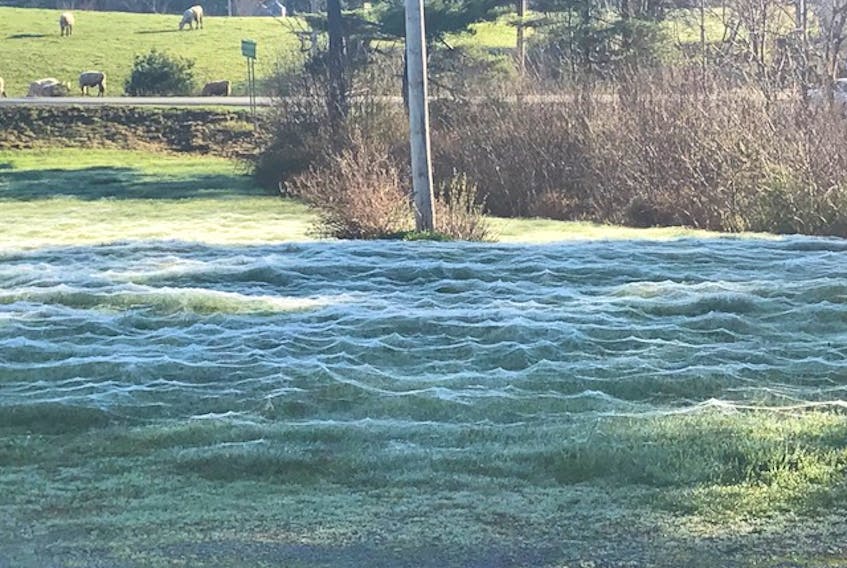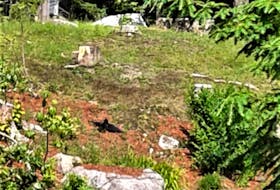If you are arachnophobic, you probably don’t like the look of the Zincks’ lawn just outside of Bridgewater, N.S.
Imagine how big the spider must have been? Don’t worry or maybe do, it wasn’t just one spider! There are millions of spiders living in your lawn and, yes, that’s quite normal. It only takes one night for a spider to spin a web and spiders often spin their webs at night when the wind is light.
In the fall, the grass spider - also called the funnel spider - constructs a fine, sheet-like web across the surface of the grass blades and then the female spider deposits an egg sac somewhere on the web. When spring arrives, the eggs hatch and young spiders emerge. They molt their skin as they grow into adults and begin to build webs in the grass. The dainty webs become visible on the grass around May. Had it not been for very specific meteorological conditions, Rita and Laurie Zinck would have walked right through the web blanket without noticing a thing. The webs were there anyway, but the morning dew showed them up.
Spiders might look creepy, but they should be your friends! After all, they eat mosquitos!
- Want more weather information? Visit WeatherByDay.ca
- Have a weather question, photo or drawing to share with Cindy Day? Email [email protected]
Cindy Day is the chief meteorologist for SaltWire Network.









